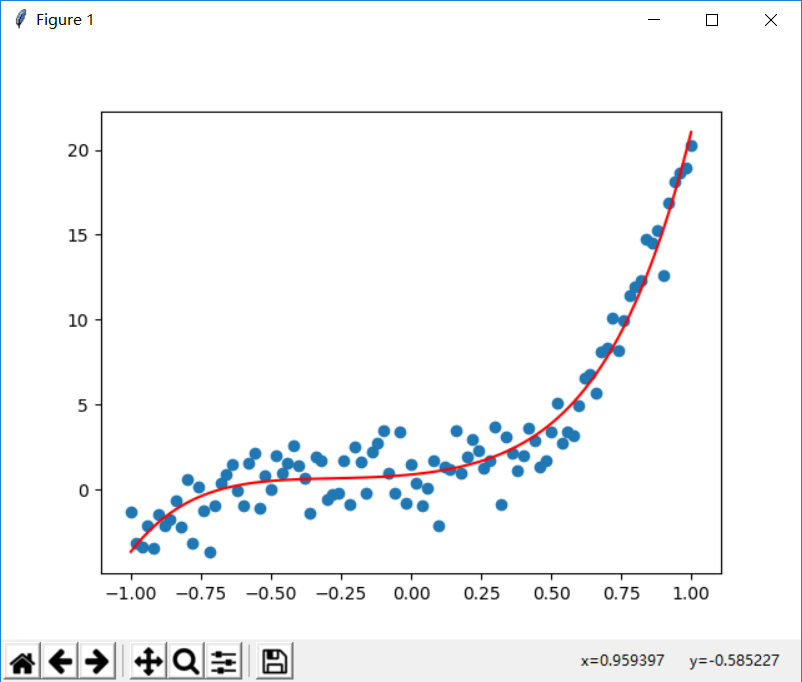#coding:utf-8
'''
多项式
'''
import numpy as np
import tensorflow as tf
import matplotlib.pyplot as plt
# 定义模型
def model(X,w):
terms = []
for i in range(num_coeffs):
term = tf.multiply(w[i],tf.pow(X,i))
terms.append(term)
return tf.add_n(terms)
# 学习速率
learning_rate = 0.01
# 迭代次数
training_epochs = 40
# 生成模拟数据
train_X = np.linspace(-1,1,101)
# 设置多项式维度
num_coeffs = 6
train_Y_coeffs = [1,2,3,4,5,6]
train_Y = 0
for i in range(num_coeffs):
train_Y += train_Y_coeffs[i] * np.power(train_X,i)
# 生成带有噪音的数据
train_Y += np.random.randn(*train_X.shape) * 1.5
# 定义训练参数
X = tf.placeholder(tf.float32)
Y = tf.placeholder(tf.float32)
w = tf.Variable([0.] * num_coeffs,name='parameters')
y_model = model(X,w)
cost = (tf.pow(Y-y_model,2))
train_op = tf.train.GradientDescentOptimizer(learning_rate).minimize(cost)
sess = tf.Session()
init_op = tf.global_variables_initializer()
sess.run(init_op)
# 训练
for epoch in range(training_epochs):
for (x, y) in zip(train_X, train_Y):
sess.run(train_op, feed_dict={X: x, Y: y})
w_val = sess.run(w)
print(w_val)
sess.close()
plt.scatter(train_X, train_Y)
train_Y2 = 0
for i in range(num_coeffs):
train_Y2 += w_val[i] * np.power(train_X, i)
plt.plot(train_X, train_Y2, 'r')
plt.show()























 1251
1251











 被折叠的 条评论
为什么被折叠?
被折叠的 条评论
为什么被折叠?










